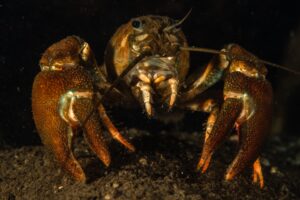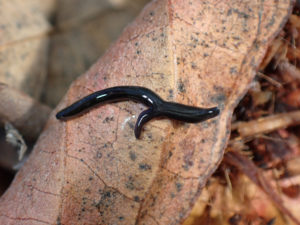Q: A group of families goes out every year, catching up to 300 crawdads for a big feast, releasing those with eggs. We often wonder if we’re depleting the supply. How long do they live? Are they native to the Bay Area? [Sam, Vallejo]
A: Well, Sam, I am here to tell you go right ahead and eat all the crawdads you want, with or without eggs. And you can do so completely guilt free. In fact, your annual feast is likely benefiting some native species, such as the California newt. Depending on where you have been catching the crawdads, they could either be red swamp crayfish (Procambarus clarkii) or signal crayfish (Pacifastacus leniusculus). Neither is native here and both are considered invasive pests. The Bay Area native sooty crawdad (Pacifastacus nigrescens) has disappeared due to competition from the signal. California now has only one native crayfish—the Shasta crawdad. Native to Shasta County—and not found in the Bay Area—it is listed as endangered because of water diversions, predation, and competition from that nasty signal crawdad.
The red swamp crawdad, native to the southeastern United States, has been transplanted all over the world from Sweden to Kenya as a food source. It is extremely adaptable and is very common in the Delta and Central Valley. Researchers have found that it preys on native California newts and it has been implicated in the disappearance of these amphibians from streams.
Both of these introduced crawdads eat a wide variety of plant and animal matter and can live from five to ten years in the wild. They have also become an important food item for California river otters, herons, egrets, raccoons, and occasionally Sam and his family.




